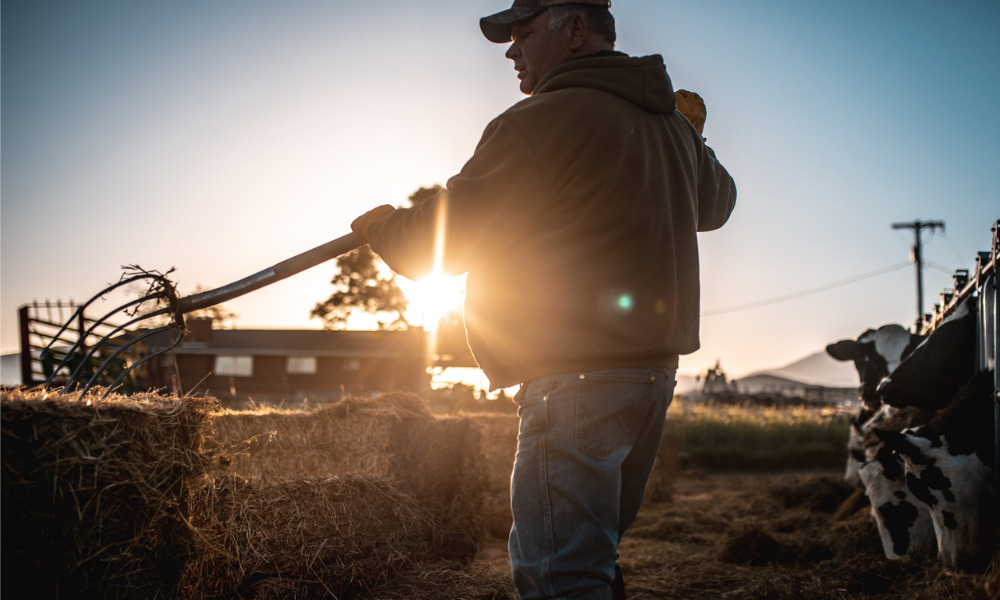Ottawa invests over $1.6 million to reduce risk of injuries in Canadian agriculture

The Saskatchewan government is reminding agricultural employers of the importance of having effective occupational health and safety (OHS) programs in place to prevent and respond to workplace hazards.
"Farm safety goes beyond everyday routines," said Minister of Agriculture Daryl Harrison. "It is also about being ready for the unexpected. This week is a great opportunity for producers to review their emergency plans and make sure their workers and families know how to respond to a crisis."
The reminder came as the provincial government has proclaimed March 16 - 22, 2025 as Agricultural Safety Week, with a focus on protecting agricultural workers and strengthening safety practices across the province.
Just days earlier, the federal government announced a separate investment of up to over $1.6 million over three years to the Canadian Agricultural Safety Association (CASA) through the AgriCompetitiveness Program, an initiative under the Sustainable Canadian Agricultural Partnership, in time for Canadian Agricultural Safety Week (CASW).
Through national leadership, training programs, awareness campaigns, and on-farm resources, CASA will help farmers, farm families, and workers adopt safer practices, according to the federal government.
“Our hardworking farmers do so much for us, from putting food on our tables to keeping our economy strong. This funding will help ensure they are safe and taking care of their own health – both mental and physical – so they can continue doing the vitally important work they do,” said Lawrence MacAulay, Canada’s minister of agriculture and agri-food. “By supporting farmers and their families, we’re helping to build [a] stronger, safer agricultural sector for everyone.”
What are the hazards faced by agricultural workers?
According to the Canadian Centre for Occupational Health and Safety (CCOHS), farm workers face numerous safety hazards in the workplace, including:
- Working at heights, such as falls from heights, down shafts, etc.
- Slips, trips and falls from wet, untidy and obstructed floors.
- Risks from animals include kicks, bites, steps, strikes, being squeezed against a wall or fence, etc.
- Various hazards from machinery and equipment (e.g., tractors, pickups, off-road vehicles, ATVs, front-end loaders, implements, attachments/power take-offs, chainsaws, etc.).
- Risk of accidental start-up when working on equipment or machinery.
- Working with sharp blades or edges
- Working in or near confined spaces
- Fire and explosion hazards, including combustible dusts and decaying manure.
On top of that, there are also biological, chemical, ergonomic, physical and psychological hazards that employers should consider in their safety programs.
Here are some preventive measures that employers can share with their employers, according to CCOHS:
- Read the manufacturer's instructions and know how to use all equipment safely.
- Inspect all tools and equipment and make sure they are in good condition before use.
- Understand the behaviour of animals including their reactions. Plan, in advance, your escape route whenever you work in an enclosure with animals.
- Know the hazards associated with confined space entry and follow procedures for confined space work.
- Do not enter a storage bin or a confined space, especially those with loose materials, unless all precautions have been taken.
- Make sure all sharp equipment is disposed of in a safe manner.
- Wear personal protective equipment (PPE) (e.g., gloves, footwear, hearing protection, respirator).
- Keep and maintain first-aid kit(s).
- Develop an emergency preparedness and response plan, including an animal evacuation plan.
From 2011 to 2020, there were 624 agriculture-related fatalities in Canada: an average of 62 per year, Ottawa noted. Despite that, agriculture-related fatalities have decreased by 36 per cent, dropping from an average of 110 deaths per year (1990–2005) to 70 deaths per year (2006–2020), according to the federal government.
The CASW is an annual campaign held the third week of March that aims to empower farmers, farm families, and farming communities to build, grow, and lead the agricultural industry in safety and sustainability.





